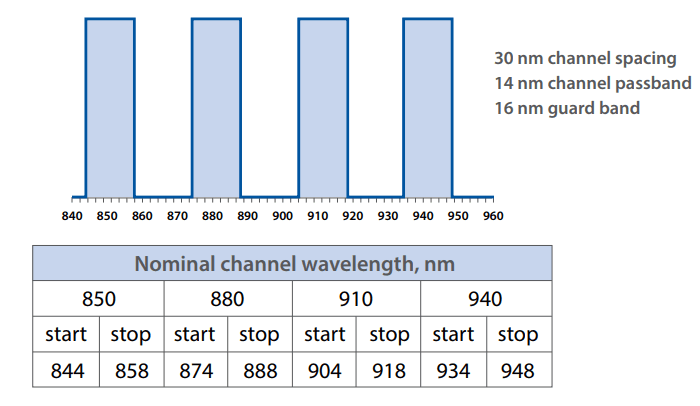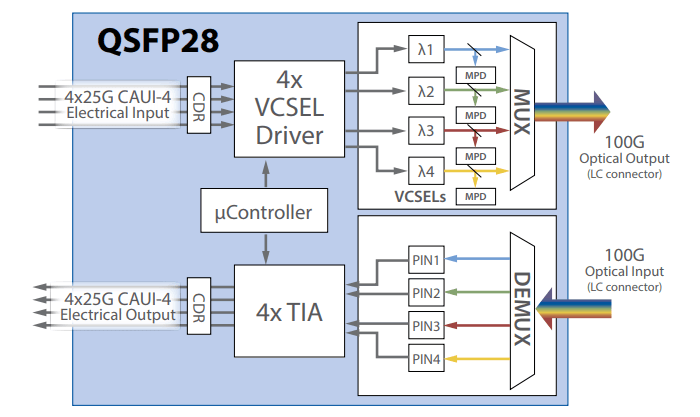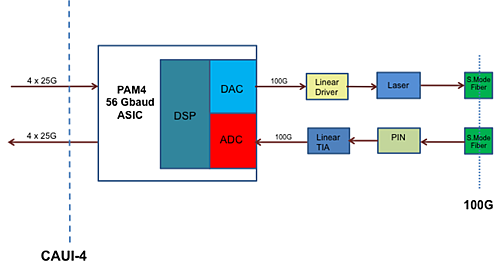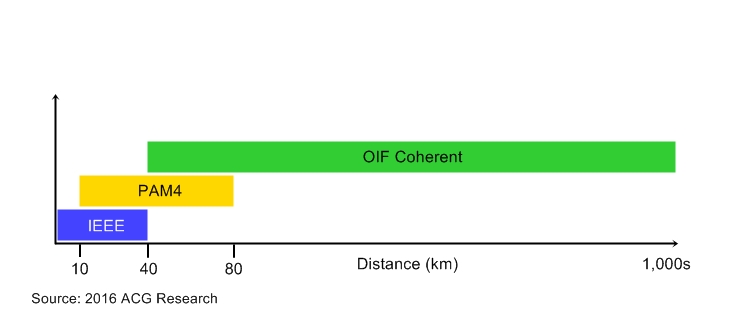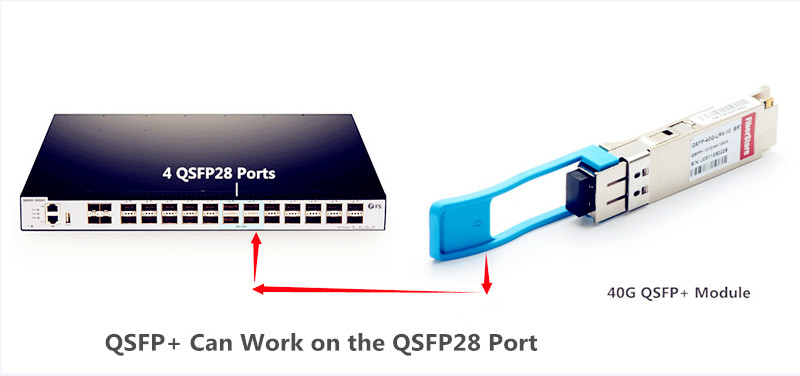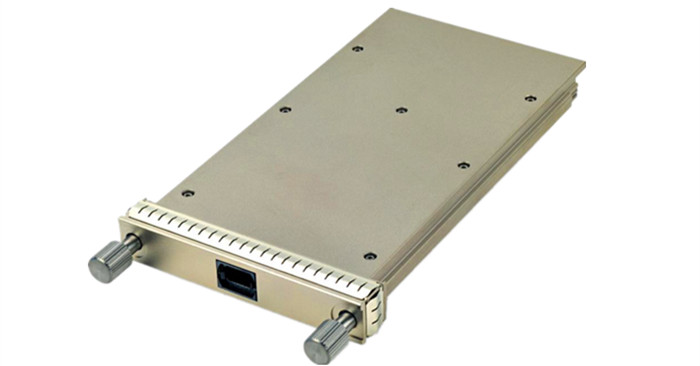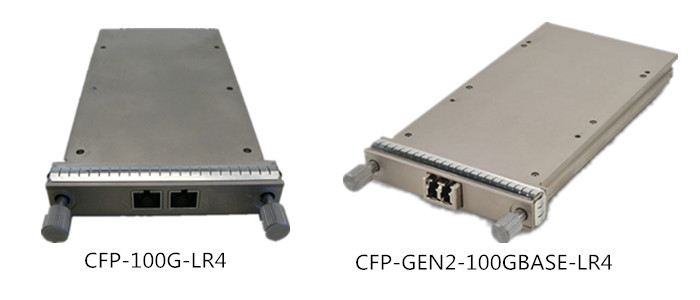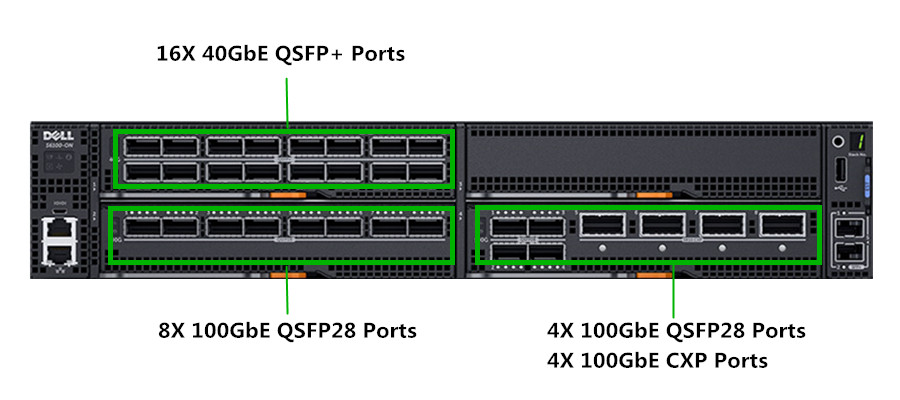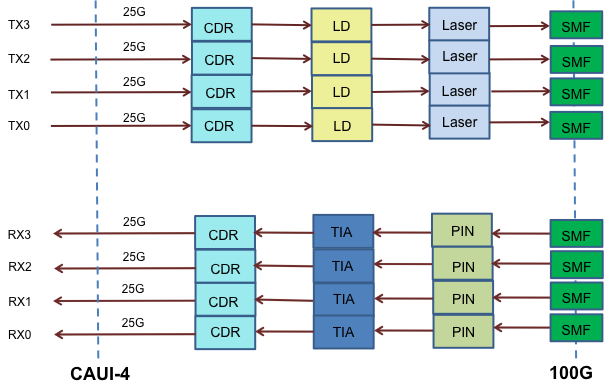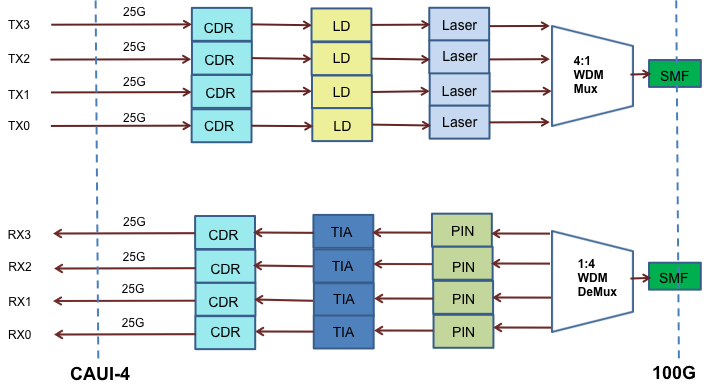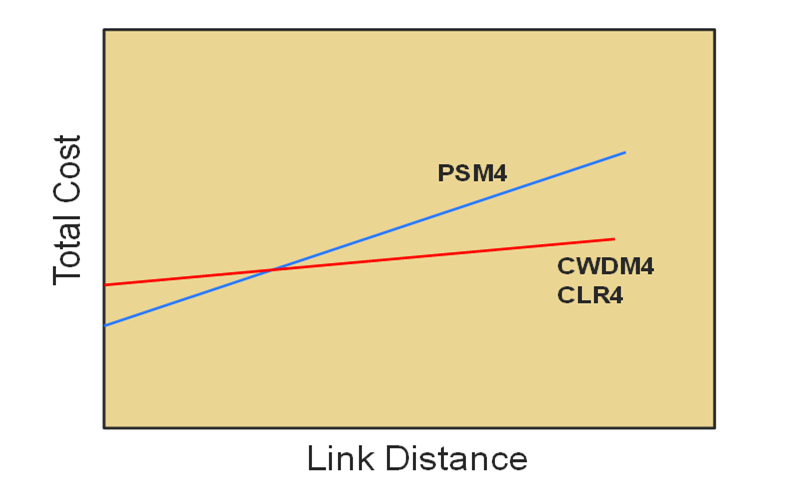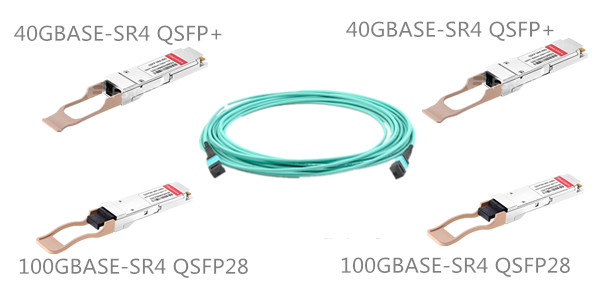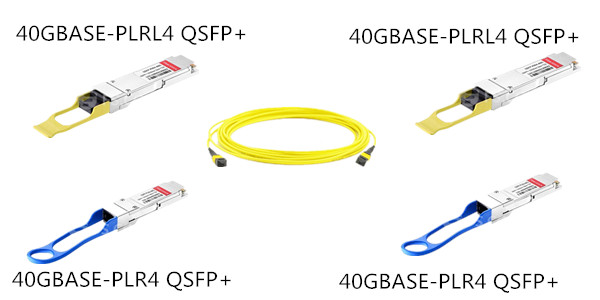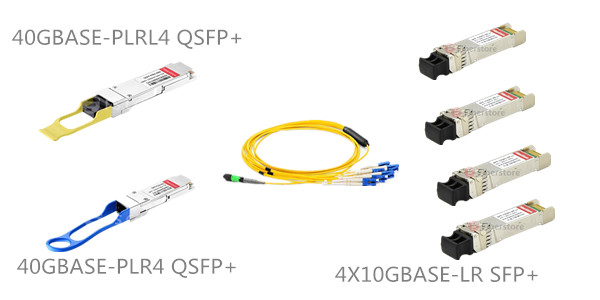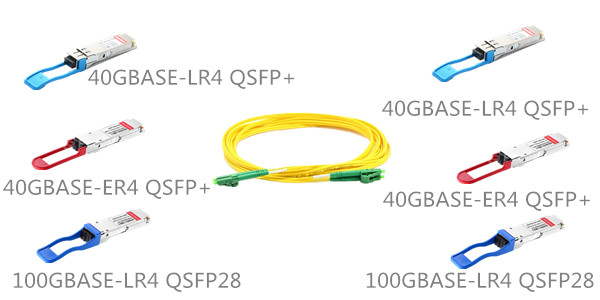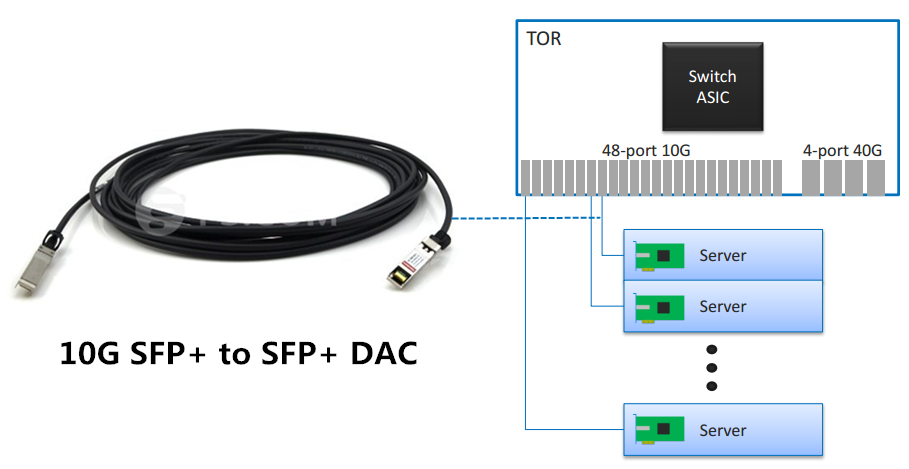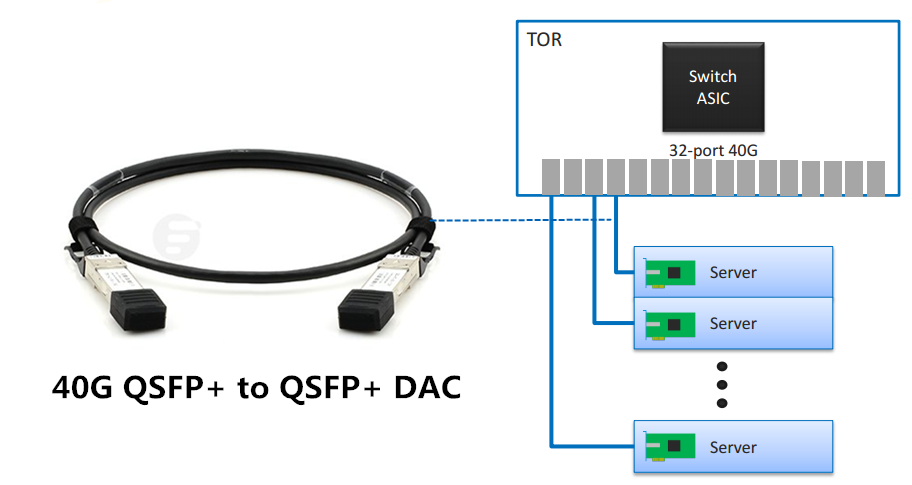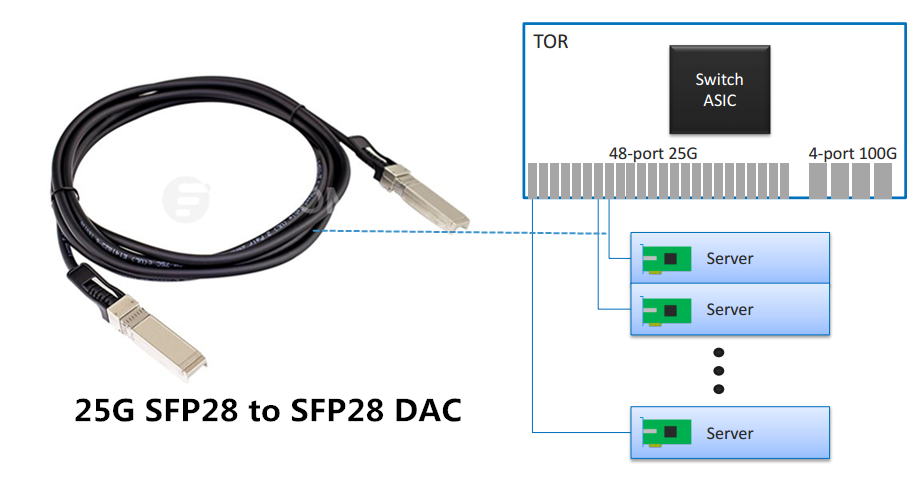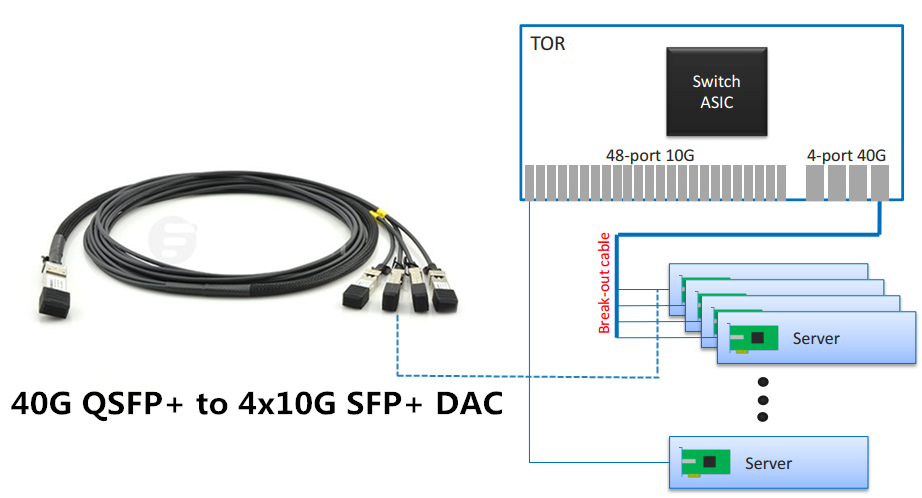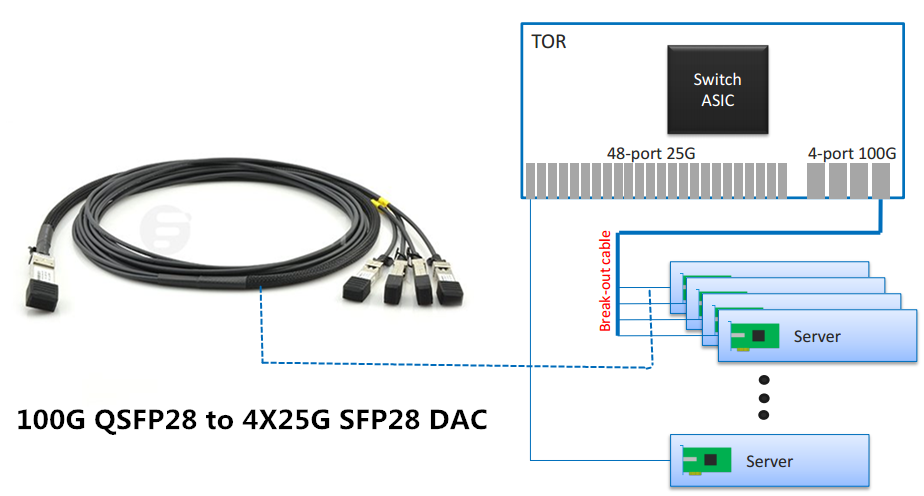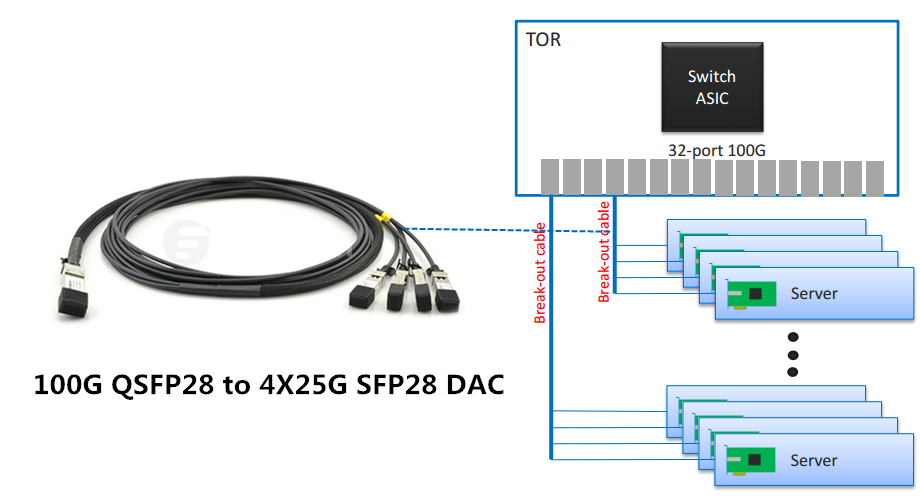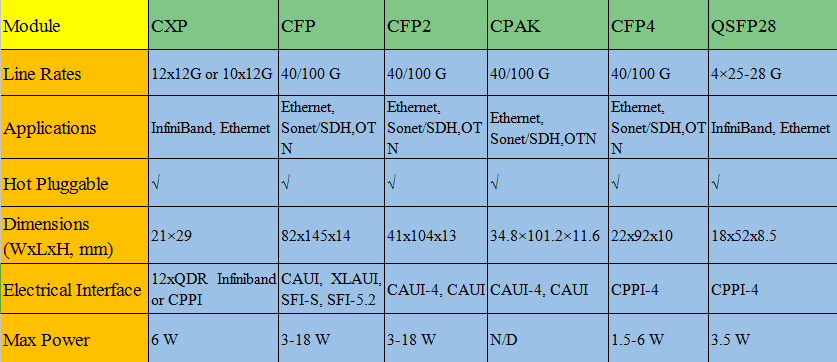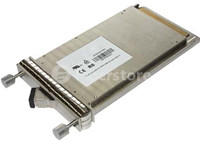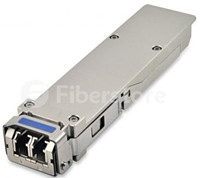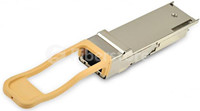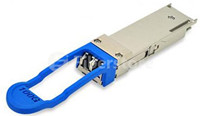With the promotion of OM5 multimode fiber (MMF) and the large-scale deployment of 40G or 100G data center transmission network, SWDM technology has gradually entered people’s field of vision and has begun to be applied. Then, what is SWDM4? What is 100G SWDM4 transceiver? What are the advantages of them? Look at the text below to get all the answers.
What Is SWDM4?
To begin with, you should know what the SWDM is before knowing anything about SWDM4, right? Then, what is SWDM?
Actually, SWDM, whose whole full name is short wavelength division multiplex, is a new multi-vendor technology that promises to provide the lowest total cost solution for enterprise data centers upgrading to 40G and 100G Ethernet with the existing 10G duplex OM3/OM4 MMF infrastructure. What’s more, it can cost-effectively increase bandwidth density for new data center builds and extend the reach when used with OM5 wideband multimode fiber (WBMMF) as well. By the way, OM5 fiber also future-proofs the infrastructure for possible future 200G, 400G and 800G interfaces.
To upgrade data centers to 40G/100G Ethernet without changing the existing duplex MMF infrastructure being used for 10G Ethernet, pluggable optical transceivers with SWDM technology matters a lot. This approach consists of multiple vertical-cavity surface-emitting lasers (VCSELs) operating at different wavelengths in the 850nm window (where MMF is optimized). The four-wavelength implementation of SWDM is called SWDM4, and these four wavelengths (850, 880, 910 and 940 nm) are multiplexed/demultiplexed inside a transceiver module into a pair of MMFs (one fiber in each direction, i.e., a standard duplex interface). Each of the four wavelengths operates at either 10G or 25G, enabling the transmission of 40G (4 x 10G) or 100G (4 x 25G) Ethernet over existing duplex MMF, using standard LC connectors.
What is 100G SWDM4 Transceiver?
SWDM4 transceivers can deliver 40G and 100G connections in the same way a standard SFP+ transceiver connects, using duplex LC OM3 or OM4 cabling. Here, we will focus on the 100G connections. You may know something about 100G transceiver, then, what about 100G SWDM4 transceiver?
Actually, from the name, it is easy to tell that a 100G SWDM4 transceiver is a 100G transceiver featuring SWDM4 technology. It provides 100Gbps bandwidth over a standard duplex MMF, eliminating the need for expensive parallel MMF infrastructure. And it offers a seamless migration path from duplex 10G to 100G.
According to 100G SWDM4 MSA Technical Specifications, a 100G SWDM4 QSFP28 transceiver can be used for links up to 75m of OM3 fiber or up to 100m of OM4 fiber. The Tx port transmits 100G data over 4 x 25Gbps wavelengths, and the Rx port receives data over 4 x 25Gbps wavelengths. The wavelengths are in the “short wavelength” range (from 850nm to 940nm). Of course, you can use the advanced OM5 fiber operating only over two fibers to get better experience (up to 150m) with a higher price as well.
Advantages of a 100G SWDM4 Transceiver
Here are several benefits from using the SWDM4 in 100G environments with MMF:
- Cost-Effective: It uses two fibers (duplex) instead of eight (SR4), enabling significant fiber infrastructure capex savings.
- OM5 Supported: It supports links up to 150m over OM5 MMF with only two fibers.
- Easy Migration to 100G: It enables seamless migrations from both 10G and 40G to 100G without major changes to the fiber infrastructure. It works on legacy OM3 or OM4 duplex MMF as well. The widely deployed 10G-SR, 40G-BiDi and 40G-Universal optics all operate over a single pair of MMF with regular LC termination. So does the 100G-SWDM4 transceiver. Therefore, users don’t need to change the existing cabling or re-terminate.
- Familiar Tap Modules: It can be tapped using existing 1 x 2 Tap modules just like 10G-SR and 40G-Universal optics with no change or replacements, avoiding additional cost and complexity.
Conclusion
From all the above, you may have a general understanding of the three concepts: SWDM, SWDM4 and 100G SWDM4 transceiver. Given the advantages concerning above, SWDM technology and 100G SWDM4 transceivers might be dominant trends in the near future. Maybe you can keep an eye on it for future network construction. By the way, FS.COM offers a variety of 100G optical modules for you to choose from, such as PSM4, CWDM4, etc.
Related Articles:
Wideband Multimode Fiber: What to Expect From It?

